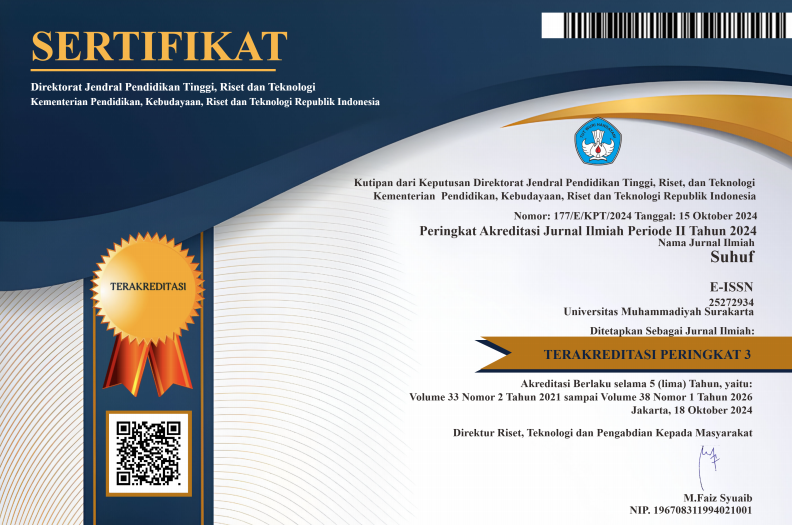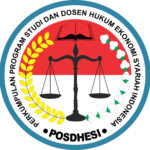Revisiting Islamic Da’wah: Principles and the Prophetic Approach to Religious Communication
Keywords:
Community engagement, Digital da’wah, Islamic teachings, Islamic propagation, Da’wahAbstract
Da’wah, or Islamic propagation, is a core religious obligation grounded in the Qur’an and Sunnah. It invites humanity to Islam and guides believers toward righteousness, following the example of Prophet Muhammad (peace be upon him). Linguistically meaning “call” or “invitation,” Da’wah includes spreading Islamic teachings, encouraging good, and discouraging wrongdoing. In contemporary contexts, it is conducted through personal interaction, community engagement, digital platforms, and interfaith dialogue, aiming to share Islam’s message of peace, purpose, and submission to Allah. This paper explores the divine purpose of Da’wah, its components, the message, the caller, and the called and the methodological principles drawn from Qur’an 16:125: wisdom (al-hikmah), good exhortation (al-maw‘izah al-hasanah), and gracious argumentation (al-jidal bil-lati hiya ahsan). Using analytical and historical methods, it highlights the universal nature of Da’wah, its distinction from other religious invitations, and the essential qualities of the caller (da‘i). The study affirms that Da’wah is a holistic system involving the subject (al-mawdu’), the caller (ad-da’iyah), and the audience (al-mad‘uww). It concludes that effective Da’wah requires wisdom, kindness, and strong character, rooted in Prophetic methodology. It recommends structured training, ethical communication, community-based programs, digital strategies, and increased accessibility through translated classical works.
Downloads
References
[1] S. Jaffar, “Da’wah in the early era of Islam: A review of the Prophet’s Da’wah Strategies,” IHYA-UL-ULUM, vol. 21, no. 2, pp. 29–43, 2021, doi: https://doi.org/10.46568/ihya.v21i2.120.
[2] A. Adiyono, S. Ni’am, and A. Akhyak, “Methodology of Islamic Studies: Islam as Religion (A Perspective Epistemology, Paradigm, and Methodology),” Anal. J. Stud. Keislam., vol. 24, no. 1, pp. 169–200, 2024, doi: https://doi.org/10.24042/ajsk.v24i1.22636.
[3] A. Ibrahim, Contemporary Islamic discourse in the Malay-Indonesian world: Critical perspectives. Strategic Information and Research Development Centre, 2022. [Online]. Available: https://books.google.co.id/books?hl=en&lr=&id=d5-dEAAAQBAJ&oi=fnd&pg=PA43&dq=The+obligation+of+Da’wah+is+incontestable+in+Islamic+scholarship+due+to+contemporary+challenges,+globalized+scepticism,+digital+misinformation,+and+cultural+fragmentation,+which+
[4] A.-K. Zaidan, Usulūl-Da’wah. Cairo: Maktabah Wahbah, 2006.
[5] R. bin H. Al-Madkhali, Manhaj al-Anbiya’ fi ad-Da’wahilAllāhi. Cairo: Maktabat al-Hady Muhammad, 2007.
[6] A. A. Al-Ilori, Tarikh al-Dacwah illa Allah Bayna al-Amswa Al-yawm, 4th ed. Cairo: Maktabah Wahbah, 2019.
[7] I. Taymiyah, Majmū’at Fatawa. Beirut: Dar-Ibn Hazm, 1986.
[8] Yahya, “A Study of the Missions of the Prophets Mentioned in Surat Hud,” University of Ilorin, 2014.
[9] S. Jaffar, “Importance Of Da’wah In Islam: A Review Of The Prophet’s Da’wah Strategies In State Of Madina,” Sch. Islam. Acad. Res. J., vol. 8, no. 1, pp. 83–107, Jun. 2022, doi: https://doi.org/10.29370/siarj/issue14aren5.
[10] O. M. Dar, “Da’wa in Islam: A Discursive Analysis of South Asian Muslim Scholarly Discourses,” Anal. J. Soc. Sci. Relig., vol. 6, no. 01, pp. 33–46, 2021, doi: https://doi.org/10.18784/analisa.v6i01.1311.
[11] E. I. Fulmer, W. W. Duecker, and V. E. Nelson, The multiple nature of the Islamic Da’wa, vol. 46, no. 3. 1924. [Online]. Available: https://files.core.ac.uk/download/pdf/14914766.pdf
[12] S. B. Suraju and D. O. Abdulsalam, “Roles of the Social Media in Dacwah Activities: Facebook in Focus,” ‘Abqari J., vol. 30, no. 1, pp. 57–80, 2024, doi: https://doi.org/10.33102/abqari.vol30no1.567.
[13] M. A. Salam, A. N. AN, A. Rhain, A. Azizah, Y. Dahliana, and A. Nurrohim, “Challenges of Da’wah Research: Understanding Da’wah Models in The Context of Qur’anic Guidance and Social Change,” al-Afkar, J. Islam. Stud., vol. 7, no. 3, pp. 1120–1141, 2024, doi: https://doi.org/10.31943/afkarjournal.v7i3.1604.
[14] A. R. Doi, “Duties and responsibilities of Muslims in non‐Muslim states: a point of view,” Inst. Muslim Minor. Aff. J., vol. 8, no. 1, pp. 42–61, 1987, doi: https://doi.org/10.1080/02666958708716016.
[15] S. Z. Hashemi and M. R. J. Yeganeh, “A comparative analysis of traditional and modern modes of religious preaching,” Asian J. Soc. Sci., vol. 37, no. 2, pp. 274–283, 2009, [Online]. Available: https://brill.com/view/journals/ajss/37/2/article-p274_8.xml
[16] Z. A. Majid, “The Problems Of Dakwah Ummah,” Al-Risalah J. Stud. Agama dan Pemikir. Islam, vol. 14, no. 2, pp. 604–622, 2023, doi: https://doi.org/10.34005/alrisalah.v14i1.3092.
[17] N. Brehony, Yemen divided. IB Tauris, 2011. [Online]. Available: https://www.torrossa.com/it/resources/an/5216055
[18] M. F. M. Sharif and R. Shamsudin, “Intercultural Da’wah Taxonomy for a Pluralist Society,” KATHA-The Off. J. Cent. Civilisational Dialogue, vol. 13, no. 1, pp. 94–117, 2017, doi: https://doi.org/10.22452/KATHA.vol13no1.5.
[19] A. Dahmayanti, M. Munawara, R. Risdayani, and M. Muliana, “The Role of Muslimah Wahdah Tanralili Branch in Da’wah Outside the Home: A Review of the Rule of al-Ḍarar al-Asyaddu Yuzālu bi al-Ḍarar al-Akhaf,” NUKHBATUL’ULUM J. Bid. Kaji. Islam, vol. 10, no. 2, pp. 245–266, 2024, doi: https://doi.org/10.36701/nukhbah.v10i2.1780.
[20] Sheikh Ahmad Mahmoud, The Da ’ wah to Islam. 1995. [Online]. Available: www.khilafah.com%5Cn1415
[21] K. O. Sulaiman and M. O. Bello, “Exploring the Roles of Muslim Youths in Propagation of Islam (Da’wah) in Contemporary World,” Int. J. Arts, Humanit. Manag. Stud., vol. 05, no. 08, pp. 1–14, 2019, [Online]. Available: http://ijahms.com/upcomingissue/01.08.2019.pdf
[22] F. Esack, The Qur’an A User’s Guide. England: Oneworld Publications, 2005. [Online]. Available: https://psipp.itb-ad.ac.id/wp-content/uploads/2020/10/Farid-Esack-The-Quran_-A-Users-Guide-2005-2.pdf
[23] R. J. Feenstra, “Trinity,” in The Cambridge Companion to Christian Philosophical Theology, 2009, pp. 3–14. doi: https://doi.org/10.1017/CCOL9780521514330.001.
[24] M. Shah and S. Sorajjakool, “Hinduism,” in World Religions for Healthcare Professionals: Third Edition, 2023, pp. 54–68. doi: https://doi.org/10.4324/9781003288862-5.
[25] Y. N. Stokar and G. Goldzweig, “He Heals the Broken-Hearted and Binds Up Their Wounds: A Jewish Approach to Spiritual Aspects in Palliative Care,” in Spiritual Care in Palliative Care: What it is and Why it Matters, 2024, pp. 153–166. doi: https://doi.org/10.1007/978-3-031-50864-6_11.
[26] J. Mbiti, “The Hen Knows When It Is Dawn, But Leaves the Crowing to the Cock,” in Currents of Encounter, vol. 25, 2006, pp. 151–176. doi: https://doi.org/10.1163/9789401202329_010.
[27] F. Yusuf et al., “Wasatiyyah Da’wah And Religious Freedom In Malaysia: A Constitutional Perspective,” J. Ilm. Peuradeun, vol. 13, no. 2, pp. 1527–1548, 2025, doi: https://doi.org/10.26811/peuradeun.v13i2.1452.
[28] M. J. Page et al., “The PRISMA 2020 statement: an updated guideline for reporting systematic reviews,” BMJ, p. n71, Mar. 2021, doi: https://doi.org/10.1136/bmj.n71.
[29] A. G. Don et al., “Da’wah through social services method: The experience of the department of da’wah and leadership studies, National University of Malaysia,” Adv. Nat. Appl. Sci., vol. 6, no. 4 SPL.ISS. 3, pp. 545–548, 2012, [Online]. Available: https://www.scopus.com/inward/record.uri?eid=2-s2.0-84876701934&partnerID=40&md5=ad0eb81bde70e7f87258a14f8f5c2905
[30] J. Hashim and M. Ahmad, “The concept of Islamic da’wah and it’s obligation,” Glob. J. Al-Thaqafah, vol. 2, no. 1, pp. 83–90, 2012, [Online]. Available: https://www.scopus.com/inward/record.uri?eid=2-s2.0-84904108195&partnerID=40&md5=fba602f9e0274c67da8f22f300f3d81e
[31] D. Kuswandi, A. Rohman, and G. A. Muttaqien, “The Quran Manuscripts in Indonesia: A Historical Review,” Suhuf Int. J. Islam. Stud., vol. 36, no. 2 SE-Articles, Nov. 2024, doi: https://www.doi.org/10.23917/suhuf.v36i2.6513.
[32] Y. F. Hidayat, “The Construction Of Mohammad Daʻwah To Umma Al-Daʻwah In Hadiths Of Kutubus-Sittah,” Ascarya J. Islam. Sci. Cult. Soc. Stud., vol. 2, no. 2, pp. 169–180, 2022, doi: https://doi.org/10.53754/iscs.v2i2.453.
[33] N. S. Aziz, A. S. Ismail, and H. H. B. Mohidin, “Building communal values for quality sustainable living in traditional madrassa—the case of Madrassa Quran Kubang Bujuk, Trengganu,” Adv. Sci. Lett., vol. 23, no. 9, pp. 8384–8388, 2017, doi: https://doi.org/10.1166/asl.2017.9896.
[34] A. O. Shuriye, “The role of tawheedic stimulus in the conscience of muslim individuals,” Mediterr. J. Soc. Sci., vol. 5, no. 23, pp. 1940–1948, 2014, doi: https://doi.org/10.5901/mjss.2014.v5n23p1940.
[35] T. Haq and N. A. N. M. Isa, “From Combating Religious Blasphemy to Promoting Peace: Reflections on the Role of Islamic Da’wah and Law in Indonesia’s Pluralistic Society,” Int. J. Law Soc., vol. 3, no. 2, pp. 90–109, 2024, doi: https://doi.org/10.59683/ijls.v3i2.95.
[36] M. Kashif, E. C. De Run, M. Abdul Rehman, and H. Ting, “Bringing Islamic tradition back to management development: A new Islamic Dawah based framework to foster workplace ethics,” J. Islam. Mark., vol. 6, no. 3, pp. 429–446, 2015, doi: https://doi.org/10.1108/JIMA-12-2013-0086.
[37] K. M. Khambali, S. Sintang, N. Senin, and S. Shahrud-Din, “Interfaith dialogue in the context of comparative religion,” Middle East J. Sci. Res., vol. 14, no. 12, pp. 1599–1612, 2013, doi: https://doi.org/10.5829/idosi.mejsr.2013.14.12.11017.
[38] H. Abdullah, M. A. M. Ali, H. Baharun, N. Massari, and H. Ismail, “Malay-english translation competencies among future global da’ies,” Asia Pacific J. Educ. Educ., vol. 36, no. 1, pp. 25–39, 2021, doi: https://doi.org/10.21315/apjee2021/36.1.2.
[39] W. Wulandari, “Implementation of Islamic Education and Wasathiyah Da’wah for Millennial Generation with Al-Qur’an Perspective in Facing Society 5.0,” J. Pendidik. Agama Islam, vol. 19, no. 1, pp. 129–140, 2022, doi: https://doi.org/10.14421/jpai.2022.191-10.
[40] Z. Aini and A. G. Don, “The Implementation Of Communication Skills In Da’wah,” Hamdard Islam., vol. 45, no. 1, pp. 81–102, 2022, [Online]. Available: https://www.scopus.com/inward/record.uri?eid=2-s2.0-85143080063&partnerID=40&md5=539e590d1af912092d3d6789918155ab
[41] M. F. Ashaari, R. M. Rasit, M. I. Mokhtar, R. M. Kawangit, and B. M. Nasir, “The improvement of teaching and learning in the course ‘Da’wah roduction in electronic media’ through scripts and hosting,” Turkish Online J. Educ. Technol., vol. 2015, pp. 666–672, 2015, [Online]. Available: https://www.scopus.com/inward/record.uri?eid=2-s2.0-84957577645&partnerID=40&md5=2d859d76d8787dde52cb46d2644730a0
[42] D. K. Dewi and M. K. Dewi, “Nurturing Islamic accountants: bridging the gap between practitioners’ expectations and students’ perspectives on Islamic accountant qualifications,” J. Islam. Account. Bus. Res., Apr. 2025, doi: https://doi.org/10.1108/JIABR-08-2023-0242.
[43] D. H. Warren, Debating the Renewal of Islamic Jurisprudence (Tajdīd al-Fiqh) Yusuf al-Qaradawi, his Interlocutors, and the Articulation, Transmission and Reconstruction of the Fiqh Tradition in the Qatar-Context. The University of Manchester (United Kingdom), 2015. [Online]. Available: https://www.proquest.com/openview/7db9436e4955b689872370faac978d23/1?pq-origsite=gscholar&cbl=51922
[44] M. M. Sule, “Response To Muslims Da’wah Activities’ By Non-Muslims In Akwanga And Nassarawa Eggon Local Government Areas Of Nasarawa State, Nigeria,” QiST J. Quran Tafseer Stud., vol. 3, no. 1, pp. 23–39, Dec. 2023, doi: https://doi.org/10.23917/qist.v3i1.3110.
[45] B. Hairuman, “Implementation of Simultaneous Regional Elections during the Covid-19 Pandemic from Qawaid Fiqhiyyah’s Perspective,” AL-WIJDÃN J. Islam. Educ. Stud., vol. 10, no. 1, pp. 211–236, 2025, doi: https://doi.org/10.58788/alwijdn.v10i1.6482.
[46] F. Shehu, “Methodology of Prophetic,” J. Educ. Soc. Sci., vol. 6, pp. 9–17, 2017, [Online]. Available: https://jesoc.com/wp-content/uploads/2017/03/JESOC-30.pdf
[47] F. Shehu, “Investigating Ismā͑īl Rājī al-Fārūqī’s Methodology in the Study of Christianity through Selected Textual Analysis from His Christian Ethics,” Intellect. Discourse, vol. 31, no. 1, pp. 31–55, 2023, doi: https://doi.org/10.31436/id.v31i1.1913.
[48] A. G. Don et al., “Da’wah among Non-Muslims: A view from Sri Lanka,” Adv. Nat. Appl. Sci., vol. 6, no. 4 SPL.ISS. 3, pp. 534–540, 2012, [Online]. Available: https://www.scopus.com/inward/record.uri?eid=2-s2.0-84876731226&partnerID=40&md5=30aefcf89c0e3c3d9360ee4dbe6cbc09
[49] A. T. Sikumbang, M. A. Dalimunthe, S. Kholil, and N. F. Nasution, “Digital Da’wah Indonesia Ulema in the Discourse of Theology,” Pharos J. Theol., vol. 105, no. 1, pp. 1–14, 2024, doi: https://doi.org/10.46222/pharosjot.1051.
[50] A. Ozkan, “Al-Ghazālī and Rasā’il Ikhwān al-Ṣafā’: Their Influence on His Thought,” University of California, 2019. [Online]. Available: https://escholarship.org/uc/item/0th2s0ss
[51] H. E.-D. SAMIR, A. M. Al-Sagheer, and F. ALGHAZALI, “Conversational Implicature in Quranic Narratives: The Last Verses in Surat Al-Maida as a Model,” J. Posthumanism, vol. 5, no. 3, Apr. 2025, doi: https://doi.org/10.63332/joph.v5i3.918.
[52] O. Nath, “Wisdom: a Knowledge First Perspective,” University College London, 2023. [Online]. Available: https://discovery.ucl.ac.uk/id/eprint/10197372/2/Wisdom - A Knowledge First Perspective.pdf
[53] M. Anshar, A. Djamereng, and M. Ilham, “Content Analysis and Audience Receptions of Online Da’wah on YouTube Social Media,” J. Komun. Malaysian J. Commun., vol. 40, no. 1, pp. 173–187, 2024, doi: https://doi.org/10.17576/JKMJC-2024-4001-10.
Downloads
Submitted
Accepted
Published
How to Cite
Issue
Section
License
Copyright (c) 2025 Daud Olalekan Abdulsalam

This work is licensed under a Creative Commons Attribution 4.0 International License.


















